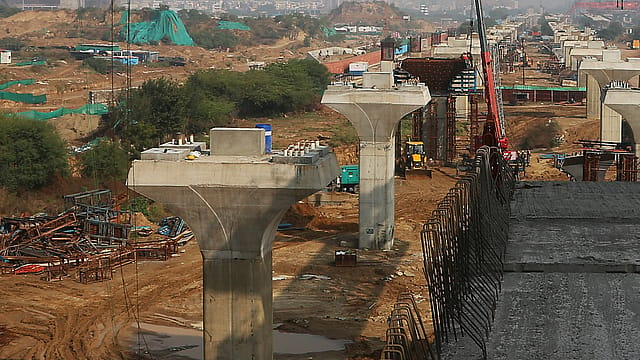Construction, manufacturing key areas of concern: Q3 GDP data
ADVERTISEMENT

Erosion of the favourable base effect has taken the fizz out of the Q3 FY22 gross domestic product (GDP) growth, which dipped sequentially to 5.4% from 8.5% in the second quarter of the current financial year, according to the data released by the National Statistics Office (NSO). This compares with GDP growth of 20.3% in the April-June quarter, this fiscal. Also, in the comparable quarter in the year ago period (October-December, 2020-21), the Indian economy grew at 0.7%, indicating the first simmer of hope post the lockdown restrictions of March 2020.
Apart from the quarterly GDP estimates, second advance estimate of national income, 2021-22, released on Monday, lowered the GDP estimate to 8.9% from 9.2% estimated in the first advance estimate of the national income released by the government on January 7.
A closer look beyond the headline numbers reveals that manufacturing and construction still remain a pain point in the economy. Also, three key indicators – gross fixed capital formation (GFCF), private final consumption expenditure (PFCE), and government final consumption expenditure (GFCE) reveal that all may not be well in the underbelly of the Indian economy despite the massive efforts by the government to put it back on the track post Covid-19 disruptions.
January 2026
Netflix, which has been in India for a decade, has successfully struck a balance between high-class premium content and pricing that attracts a range of customers. Find out how the U.S. streaming giant evolved in India, plus an exclusive interview with CEO Ted Sarandos. Also read about the Best Investments for 2026, and how rising growth and easing inflation will come in handy for finance minister Nirmala Sitharaman as she prepares Budget 2026.
Construction has contracted in the October–December quarter of the current financial year and manufacturing barely managed to remain flat. Construction sector witnessed a contraction of 2.8% at ₹2,66,947 crore in Q3, FY22, compared with ₹2,74,752 crore in Q3, FY21. In Q3, FY21, the construction sector witnessed a growth of 6.6% over the corresponding period of the fiscal year before that.
Manufacturing remained flat with 0.2% growth at ₹5,91,475 crore versus ₹5,90,504 crore in the same quarter of the previous financial year. In Q3, FY21, manufacturing grew by 8.4% over the same quarter in FY20.
No doubt manufacturing and construction have weighed on the overall numbers. Upasna Bhardwaj, senior economist at Kotak Mahindra Bank says the softer-than-expected 3Q FY22 GDP has been led by manufacturing and construction.
"Going forward, the 4Q GDP prospects are weighed down by weak activity in January due to the third wave linked restrictions. However, the pickup in activity since early February should provide some support, although risk from elevated oil prices and the impending pass through of input prices may weigh on the already weak consumption demand," says Bhardwaj.
Mining and quarrying, however, rebounded from the negative growth in Q3, FY21 to post 8.8% growth in the third quarter of the current financial year. Electricity gas and water supply, too, grew at 3.7% compared with 1.5 percent in the same quarter of the previous fiscal.
Meanwhile, gross fixed capital formation, which indicates the aggregate addition to the fixed assets in the economy, has surpassed the pre-Covid levels in the Q3 too, but only marginally. According to the data released by the ministry of statistics, GFCF in the third quarter of the current financial year at ₹11,50,761 crore is up from ₹11,35, 023 crore in the same quarter of FY2019-20. It may be noted, however, that this is a significant dip from the second quarter of the current financial year, when GFCF at ₹11,97,610 crore was up 9.5% compared with ₹10,93,791 crore in Q2, 2019-20. Sequentially, this is a dip of about ₹47,000 crore.
However, serious concerns seem to be emerging on the the Government final consumption expenditure (GFCE), which reflects the government expenditure, which has been on a decline despite the government's single handed efforts to stoke revival via capital expenditure and enhanced revenue expenditure on health, education and other social sectors. In the third quarter of the current financial year, GFCE at ₹3,56,405 crore is up from the pre-Covid levels of ₹3,45,786 crore in the third quarter of 2019-20. An alarming trend visible in the data released on Monday, however, is that the government final consumption expenditure has fallen steeply from ₹4,10,314 crore witnessed in the first quarter of the current financial year.
Private final consumption expenditure meanwhile has shown a consistent growth and beaten the pre-Covid levels quite decisively in the current financial year. At ₹23,21,609 crore in Q3, FY22, private final consumption expenditure is up from ₹21,57,091 crore in the third quarter of FY19.
